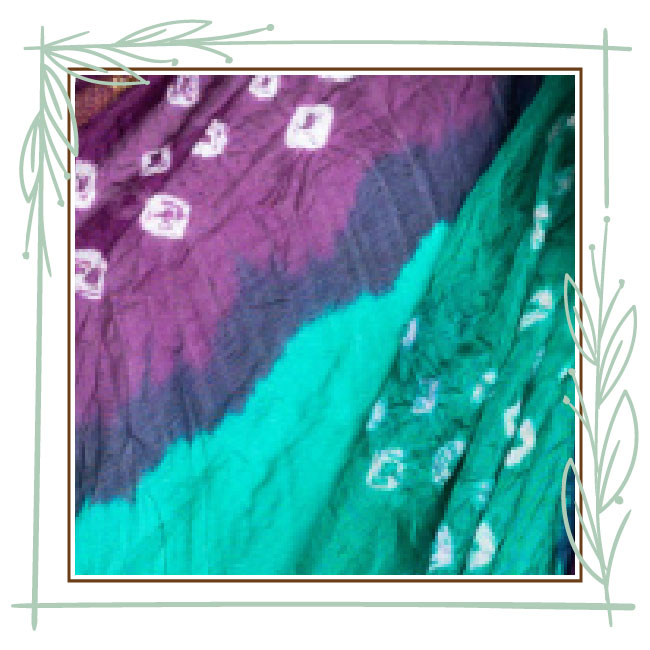Jamnagari Bandhani

One of the earliest references to “Jamnagari Bandhani” fabrics is in Bana’s Harshacharita life of King Harsh (606-648 A.D.) Mordant dyed textiles were found at Mohenjodaro sites, dates back 2000 BC. The traditional Jamnagari Bandhani or tie-dye is a very old technique of decorating cloth.
The Jamnagari Bandhani is an ancient, dyeing technique, wherein the fabric is tied in intricate patterns with the help of nails, beads or grain, which prevents the colour from seeping into the tied areas during dyeing. The technique has been so perfected that the most intricate patterns emerge in discharge, with vibrant backgrounds. Jamnagari Bandhani is very closely associated with deep rooted social customs. It is a must in the marriages of Hindus and Muslims.
The Jamnagari Bandhani is prepared on cotton, silk, wool fabrics. The time taken for tying work varies depending upon the Jamnagari Bandhani design, and is ranging from 4 to 90 days. The manufacturing process is so cumber-some and time consuming to make a final product. The entire manufacturing process is manual. There will be many iterations of this process depending upon the designs and the colour scheme needed. The designs and colour patterns are so unique that the craft persons use their skill and ingenuity to make unique designs. There are two different styles of Jamnagari Bandhani. One has the popular 'Dots' and the other has lines called 'Laheria'. ”Laheria” originates from the “lahar” which means waves.
The product and manufacturing process of Jamnagari Bandhani products of Gujarat are unique with intricate designs and tiny dots. The production process on the woven fabric using the tie-dye method is unique in nature. As depicted in the manufacturing process, the woven cloth procured as raw material in tied with threads to make tiny dots on the preprinted designs, and then it is resist dyed.
